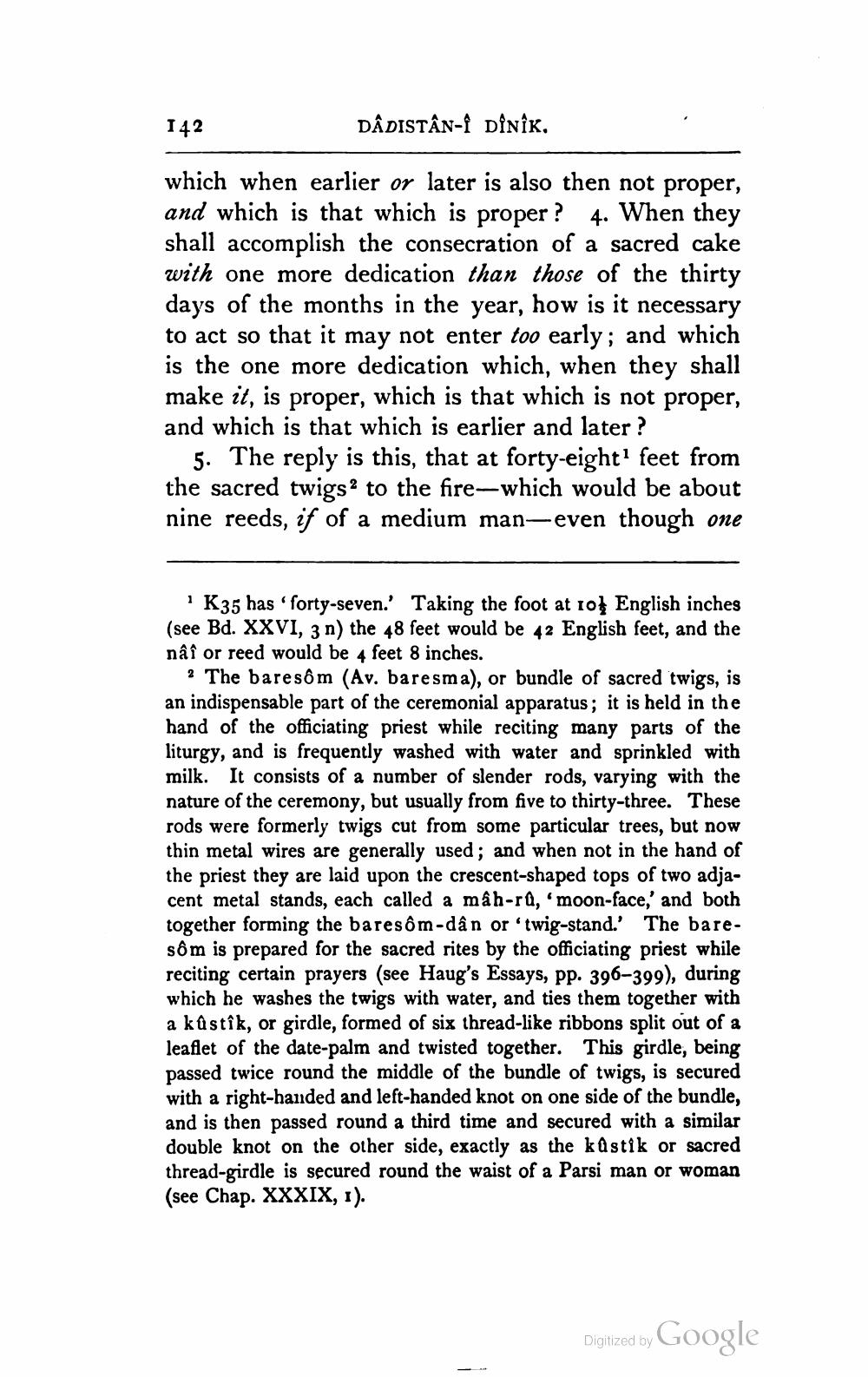________________
142
DÂDISTÂN-Î DÎNÎK.
which when earlier or later is also then not proper, and which is that which is proper ? 4. When they shall accomplish the consecration of a sacred cake with one more dedication than those of the thirty days of the months in the year, how is it necessary to act so that it may not enter too early; and which is the one more dedication which, when they shall make it, is proper, which is that which is not proper, and which is that which is earlier and later ?
5. The reply is this, that at forty-eight: feet from the sacred twigs? to the fire-which would be about nine reeds, if of a medium man-even though one
K35 has 'forty-seven.' Taking the foot at 101 English inches (see Bd. XXVI, 3n) the 48 feet would be 42 English feet, and the nâî or reed would be 4 feet 8 inches.
The baresôm (Av. baresma), or bundle of sacred twigs, is an indispensable part of the ceremonial apparatus; it is held in the hand of the officiating priest while reciting many parts of the liturgy, and is frequently washed with water and sprinkled with milk. It consists of a number of slender rods, varying with the nature of the ceremony, but usually from five to thirty-three. These rods were formerly twigs cut from some particular trees, but now thin metal wires are generally used ; and when not in the hand of the priest they are laid upon the crescent-shaped tops of two adjacent metal stands, each called a mâh-rû, 'moon-face,' and both together forming the bares ôm-dân or 'twig-stand.' The baresôm is prepared for the sacred rites by the officiating priest while reciting certain prayers (see Haug's Essays, pp. 396-399), during which he washes the twigs with water, and ties them together with a kûstîk, or girdle, formed of six thread-like ribbons split out of a leaflet of the date-palm and twisted together. This girdle, being passed twice round the middle of the bundle of twigs, is secured with a right-handed and left-handed knot on one side of the bundle, and is then passed round a third time and secured with a similar double knot on the other side, exactly as the kūstik or sacred thread-girdle is secured round the waist of a Parsi man or woman (see Chap. XXXIX, 1).
Digitized by Google




